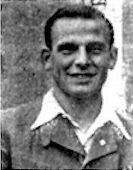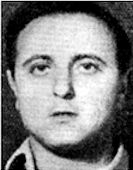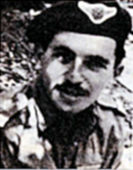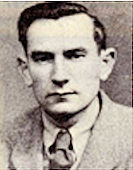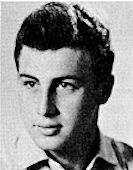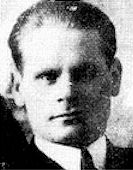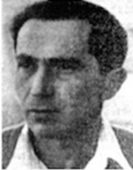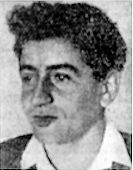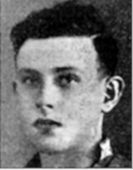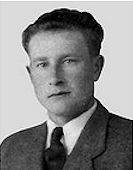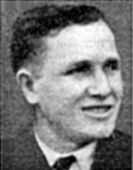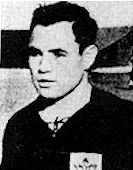Częstochowa's Israel Heroes
- Honouring True Heroes
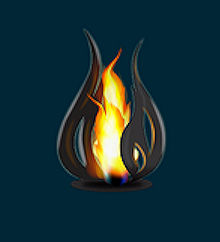 In this section of our website, we honour Israel’s “Częstochowa Heroes” – those Częstochowa landsleit who gave their lives in Israel’s Defence and/or Security Forces before, during and after the creation of the State of Israel.
In this section of our website, we honour Israel’s “Częstochowa Heroes” – those Częstochowa landsleit who gave their lives in Israel’s Defence and/or Security Forces before, during and after the creation of the State of Israel.
Many Polish Jews were involved in the campaign to establish a Jewish state in Israel. Some immigrated to Israel before World War Two. Some of those, prior to immigration, had fought World War Two battles in foreign armies or as Jewish Brigade volunteers. Most of them, Holocaust Survivors, who came from Europe illegally, immediately went to war for the independence of their new country .
The battles were fierce and some of those Czestochowa heroes, who had lived through the inferno in Europe, gave their new country, Eretz Israel, their most precious gift of all – their lives.
Through their sacrifices and deaths, they commanded us to live. We will remember them forever!
In composing our list, we draw upon the resources of Izkor, the commemoration website for the fallen personnel of Israel’s Defence and Security Forces.
Below, we present the stories of these “Częstochowa Heroes”.
SIMPLY CLICK ON EACH NAME TO READ THEIR STORIES OF HEROISM.
The son of Shmuel-Yakovand Devora, he was born in Częstochowa in 1922. In his youth, with his parents, he immigrated. Dov completed his schooling in Paris and began work as a salesman in a store. He was a member of a Zionist youth movement and dreamt of immigrating to Eretz Yisrael. However, in 1940, he found himself caught up in the fate of European Jewry. Dov was taken to a forced-labour camp where luck and his youthful strength helped him to survive five years of slavery and hard labour. When was liberated, he actively devoted himself to Zionism and to preparation for his immigration to Israel.
He left his parents behind in the Diaspora and, in November 1946, he set sail for Mandate of Palestine on the ship “Latrun” as an illegal immigrant. The ship was intercepted by the British and its passengers were sent to a camp in Cyprus. After four months, he was freed and arrived in Israel. He immediately joined the “Notrut” (the Jewish guard brigade in the British police force during the British Mandate period) and the “Haganah”. Following this he joined the IDF and served in the Kiryati Brigade.
Dov fell in the battle of Dayr Tarif, during Operation Danny on 12th July 1948 (5th Tammuz 5708). He was interred in the Military Cemetery of Nachalat Yitzchak in Tel-Aviv.
Click HERE to read his story in Hebrew.
(Courtesy: Izkor – commemorating the fallen personnel of Israel’s Defence and Security Forces)
The son of Mosze and Pnina, he was norn in 1929 (5689) in Częstochowa. In 1936, (5676), the family immigrated to Mandatory Palestine and settled in Tel-Aviv, where Yitzchak attended the “Nes Tziona” Elementary School. When he grew up, and understood the degree to which his parents were struggling to support their two children, he began to give up playing games in order to help his mother with the household chores. He was also active in the “Machanot Ha’Olim” youth movement and later in the “Ha’Tenua Ha’Meuchedet” youth movement. Upon completion of his primary school studies, he began work in an auto repair garage and he bring his wages home to his parents.
He was accepted to the Haganah and began his Army service as a signaller. Upon completion of his course, he continued on as a “madrich” in Gadna, a program to prepare young people for the Army. Together with his friends, he went out for “hachshara” (training) at Kibbutz Cholta, because he saw his future on a kibbutz. He assisted in training and worked with dedication and responsibility. He was placed in charge of the work schedule in the “Garin” (a group of candidates to be accepted into the kibbutz).
In the winter of 1948, he fought in the Upper Galilee as part of the “Ha’Galil” Battalion of the Palmach, which later became one of the battalions of the Yiftach Brigade. He was seriously wounded in a retaliation operation against the village of Ichsanya on 3rd March 1948 (2nd Adar Sheni 5708). Yitzchak demanded that his comrades leave him he was already mortally wounded – and there he died. Yitzchak was interred in the Chulta Cemetery.
Just prior to his death, he told his comrades, “We will emerge victorious. There is no other way. We will finish the War in victory”.
Click HERE to read his story in Hebrew.
(Courtesy: Izkor – commemorating the fallen personnel of Israel’s Defence and Security Forces)
The son of Dov and Arella, he was born in Częstochowa on 21st February 1932 (14th Adar Aleph 5692). In 1934, he immigrated to Mandatory Palestine, completing his studies at the “Chugim” High School in Haifa.
In October 1950, he joined the IDF in October 1950 and served in the Nachal Brigade. However, because he was not satisfied with what he was doing there, he volunteered to transfer to the Air Force, where he successfully completed pilot training with the rank of Second Lieutenant, after which time he competed a second course.
His commanders praised him greatly as a disciplined and responsible pilot. He fell while carrying out his duties on 14th December 1952 (26th Kislev 5713) and was interred in the Haifa Military Cemetery. He was posthumously promoted to the rank of Lieutenant.
In 1955, his parents made a donation to the aeronautical library at the Technion University and, on the shelves, a memorial plaque was mounted bearing the inscription “Tvi’s Corner”.
Click HERE to read his story in Hebrew.
(Courtesy: Izkor – commemorating the fallen personnel of Israel’s Defence and Security Forces)
The son of Mosze and Róża, he was born in Częstochowa in October 1917 (Cheshvan 5678). He immigrated to Israel in 1927 and, there, completed his studies in elementary school. He then rounded out his education through self-study. By profession, he was a weaver by profession. In 1948, hoined the IDF and fell in the performance of his duties on 28th May 1952 (4th Sivan 5712).
He was interred in the Kiryat Shaul Military Cemetery in Tel-Aviv. He was survived by his wife and three children.
Click HERE to read his story in Hebrew.
(Courtesy: Izkor – commemorating the fallen personnel of Israel’s Defence and Security Forces)
The son of Dawid and Lea, he was born in Częstochowa on 10th July 1948 (3rd Tammuz 5708). The family immigrated to Israel in 1950. He attended the Be’eri elementary school in Neve She’anan, Haifa and then high school at Tichon Ironi Gimel.
He belonged to the “Ha’Tnuah Ha’Meuchedet” youth movement. He successfully completed a course for “madrichim” (counsellors) in Kibbutz Ramat Yochanan and was very successful as a “madrich”. He played soccer in the “Hapoel” movement and was also active in a course for junior level “madrichim” and heads of basketball teams. He regularly swam across the Kinneret and took part in various races. He was a member of the “Ha’Noar Le’Nnoar” movement and, there, he met with youth who had turned to crime. This was Moshe’s attempt to understand their way of life and to influence them to change their lifestyle to a more positive direction. He collected stamps and coins and travelled all across the country.
Upon beginning high school, he settled quite well and was prominent in the student body, but that did not prevent him from engaging in naughty behaviour and in pranks. But, as time went by, they got to know him better and to see that, behind the regular exterior, there was a lad with unusual characteristics. These were prominent whenever he was confronted with a challenge which stimulated him to make an effort which demanded of him to utilizs his skills.
He was an exemplary commander during the Gadna travels. He showed initiative in organization and in providing assistance where needed, especially in times of crisis when difficulties were encountered. In these cases, he would act with maturity and responsibility and he could be counted upon. His personality radiated confidence and calm over his surroundings and, in the classroom, he related, seriously, to those subjects which interested him. There would be a true connection between him and the subject and also between him and his teacher. A feeling of responsibility in him was prominent, when he was required to calm the class, to restore quiet in the classroom and after some act of naughtiness. Menashe was the one who would turn to the chevra and say, “Okay, enough now”.
It is no wonder that, later, Menashe found his place in the army, in the Tzanchanim (Paratrooper) Corps. Even though he was his parents’ only son, and all the family had perished in the Holocaust, Menashe succeeded in getting what he wanted within the Tzanchanim. He fought in the Six-Day War in the Sinai and on the Golan Heights. At the end of the battles, he completed a Class Commander course and an Officers Training course. He joined the “sayeret” and, in the “hot” period of terroristism in the Jordan Valley and on the West Bank, he participated in many difficult and cruel pursuits, during which the best of the Tzanchanim commanders fell, such as Arik Regev, Gad Manala, Moshe Stempel and others.
His soldiers respected him because of the way he related to them and how he served as a personal example. He demanded obedience from them, but through recognition. He demonstrated friendship and loyalty from them and, through his pleasant manner, he realised his goals. He preferred to explain and to persuade in a sociable kind of way and, in this manner, he was able to find a way to those soldiers who were problematic and turn them into dedicated and loyal soldiers. During his period of service, he attained the rank of Lieutenant.
On 26th October 1968 (4th Cheshvan 5729), as he was leading his soldiers to take cover during a period of intense shelling, he fell in a battle near the Suez Canal. He was interred in the Haifa Military Cemetery. In a letter of condolence to his parents, his commander wrote, amongst other things,
I knew him well. I saw him perform in training and in operations. He was an excellent officer, understood his job and mastered his men and material. He belongs to that generation of giants who arose from the fire of the Holocaust. I am sure that his immediate surroundings influenced him more than anything – his home and his parents. He was close to his family and wanted them to be well. He understood that, given the conditions we are faced with in this country, someone has to do the hard work and he was not willing for someone else to do that work for him. I am sure that all that Menashe did, he did forothers. We are obligated to continue where Menshe left off – we and you.
On Chanukah 5729, the Student Council of the Ironi Gimel High School of Haifa published a booklet entitled Hadim, in which there are pages dedicated to the memory of Menashe. About a year after Menashe fell, a book entitled I Have an Only Son, G-d Guard Him, written by Binyamin Zev Yefet, was published by Moked Publishers His grave lies in the Haifa Military Cemetery.
Click HERE to read his story in Hebrew.
(Courtesy: Izkor – commemorating the fallen personnel of Israel’s Defence and Security Forces)
The son of Shimon and Esther, he was born on 14th February 1914 in Częstochowa. He was the great-grandson and grandson of a family of rabbis. In his hometown, Marian attended yeshiva and high school. During his studies, he belonged to the Betar youth movement. After graduating from his studies, he moved Łódź, where he was a merchant. He married and was the father of three daughters.
At the outbreak of World War Two, he was drafted into the Polish army and, in battles near Warsaw, he was captured by the Germans captivity. The Germans did not realise that he was Jewish and, at the end of 1939, together with other Polish officers, he succeeded in escaping captivity. He then reunited with his family and moved to the Soviet Union. After wandering all over the Soviet Union, they reached Uzbekistan. When a Polish army was established in the Soviet Union, under the command of General Anders, Marian joined and, with the Anders army, he went through Iran, Israel (where his family stayed) to South Africa. From there, he moved to England and took part in the invasion of Normandy, liberating Europe from the Germans.
On a journey of blood and fire, he passed through France, Belgium and the Netherlands and, with his unit, arrived in Germany. On 14th May 1945 (2nd Sivan 5765), he was killed by a landmine near the city of Wilhelmshaven and was interred in a mass grave with his comrades-in-arms. He left a wife and three daughters. The rest of his family perished in the Holocaust.
Click HERE to read his story in Hebrew.
(Courtesy: Izkor – commemorating the fallen personnel of Israel’s Defence and Security Forces)
The son of Mosze and Lea, he was born in Częstochowa on 23rd November 1913 (23rd Cheshvan 5674). As a teenager, he dropped out of school in order to help support his family. He worked alongside his father in a lock manufacturing factory. He persevered in increasing both his productivity and the quality of his work and, eventually, rose to the position of foreman and co-ordinator in the department which assembled the locks.
He joined the Ha’Shomer Ha’Tzair youth movement and was known both for his reticence and for his activity. He tended to rise above difficult positions, but disliked talkativeness. David was sent for “hachshara” (training) in Chełm and Lublin and served as work organizer and Assictant Treasurer, responsible for the financial support of his forty movement members from the proceeds of their work in various places. In this capacity, he also looked for employment opportunities for them and sometimes only two of the forty were working. He, therefore, needed to find opportunities to find sources for loans.
When it came his turn to immigrate to Eretz Yisrael, he gave up his right in an act of sacrifice, giving his money to one of his brothers in order to allow him to immigrate, so as to allow him to avoid served in the Polish Army. David, himself, was conscripted into the Polish army at the beginning of World War Two. After Poland capitulated to the Germans, David succeeded in avoiding German imprisonment and continued to work in the Częstochowa factory. He continued working while being confined in Częstochowa’s “Big Ghetto” and, after most of the Jews were killed, also in the “Small Ghetto”.
At the same time, he was active in the ghtteo underground, specialising in the digging of bunkers and communication tunnels. With his comrades, he endured the efforts of communicating with the Socialist Polish Underground outside of the ghetto, in order to obtain guns and help. However, from the Poles, they were unsucessful, encountering an aggressive response. When the “Small Ghetto” was liquidated, David succeeded in fleeing alone and, with the help of a Polish friend, found his way into the forest. The Polish Partisans refused to accept Jews into their ranks. So, for more than a year, he and a few Jewish comrades lived with a Jewish Partisan group, surrounded by danger from the Germans on the one hand and hostility from the Poles on the other. After he was liberated, he fell ill from exhaustion and from the hardship.
When he recovered, he went to Romania. There he dedicated himself to the service of the “Bricha” (the organised underground effort which helped Jewish Holocaust survivors escape post-World War Two Europe to Mandatory Palestine in violation of the British White Paper of 1939). In this capacity, they assisted many to reach Italy in order to immigrate, from there, to Eretz Yisrael. During this time, he received a certificate which allowed him to be able to immigrate legally to Mandatory Palestine, but he relinquished it and, for two years, worked on the Polish-Austria and Germany-Italy routes, in order to facilitate the escape of Jews to sea ports for illegal immigration.
In August 1946, he was able to illegally immigrate to Israel, together with his brother. There, he joined his friends on Kibbutz Yad Mordecai. In spite of his frail body, due to hhis past great suffering and exertion, he immediately went to work and tried to do even more than he was capable of doing – as was always his way. But remained a loner and distanced himself from his contemporaries, spending his spare hours in reading or in recalling grim memories.
In the winter of 1948, when the War of independence broke out, he volunteered his services in the planning of the trenches and bunkers, a specialty culled from his past experience in the Częstochowa ghetto. When his advice went unheeded, he would sit silently, carrying out his responsibilities to guard, to dig and to stand guard at the observation posts. During the campaign against the Egyptians, he also undertook the responsibilities of those who had fallen. He would stand at observation points without being relieved and without any complaint – 19th May 1948 (10th Iyar 5708), he was hit by a bullet and died.
Click HERE to read his story in Hebrew.
(Courtesy: Izkor – commemorating the fallen personnel of Israel’s Defence and Security Forces)
The son of Avraham and Róza, he was born on 31st December 1912 (21st Tevet 5673) in Częstochowa. When he was a pupil in the local high school, the “Ha’Shomer Ha”Tzair” youth movement, where he was known for his mild manner, his energy, his perseverance, his intelligence and for his devotion to the ideal. He soon became prominent as a madrich (counsellor) in the local ken, in summer camps and, later, as a madrich in the Zagłembie region of Poland. He later joined the primary leadership of the movement in Równo and then in the movement’s centre in Warsaw.
On 4th April 1939, he immigrated to Mandatory Palestine and joined the first encampment of his kibbutz in Netanya. Through sheer determination, he overcame the pains of rheumatism from which he suffered and became accustomed to hard, physical work. Evenings and Shabbatot were spent in cultural programming in his kibbutz and in involving himself in the affairs of the community of workers in Netanya.
In 1942, he joined the British Army and served in the Artillery Corps in the Western Desert of North Africa, as well as in Italy. In the Army, also, he dedicated himself to public activities and was chosen as a representative to mutual assistance organisations.
Upon his return to his home in Kibbutz Yad Mordecai in the Gaza plain, he was chosen as the Kibbutz Secretary, a position which he fulfilled with dedication. Later, he became a member of the “Ha’Merkaz Lagola” (The Diaspora Center) in which he was a madrich for the Cherut garin of new immigrants from the Bergen-Belsen concentration camp. He helped them to settle, practically and emotionally, into work and life on the kibbutz in Israel. In addition to his various public positions, he also worked in the chicken-coop of the kibbutz.
As a veteran soldier, he did not believe that Yad Mordecai could withstand an assault from the neighbouring Egyptian Army, which was vastly better equipped, but he still contributed his share to the defence of the kibbutz. As a trained artillery soldier, he utilised the only mortar in their possession, carrying it with him from one positon to another and striking at enemy concentrations. When the shells ran out, he continued to fight as a rifleman on the front line.
He wrote a letter to his wife on his last day, when she and their two children – together with the rest of the mothers and children – had been evacuated from the kibbutz. In it, he expressed the hope that “perhaps some of our kibbutz members will still successfully see victory and will take part in the restoration of the ruins”. Further, he writes, “We hope to see each other again. But, if not, I hope that you will know how to bear up under this as well”. To his son he writes, “Here, that there are dozens of thousands of shells”.
On 23rd May 1948 (14th Iyar 5708), the armoured divisions of the enemy broke through and he fell, while still standing on watch. He was interred in the Yad Mordecai Cemetery (Military Section).
Click HERE to read his story in Hebrew.
(Courtesy: Izkor – commemorating the fallen personnel of Israel’s Defence and Security Forces)
The son of Margalit (Perłą) and Kalman, he was born on 11th February 1929 (1st Adar Aleph 5689) in Częstochowa, Poland, to parents who were observant Jews. When he was three-years-old, the family settled in the Free City of Danzig and Zvi attended a local, Jewish, elementary school. In 1939, Zvi and his father sailed to Mandatory Palestine on the illegal immigrant ship, the “Astir”. (His mother and sister remained behind, for fear of danger, in order to immigrate to Eretz Yisrael at a later date. Sadly, they did not immigrate in time and perished in the Holocaust). The ship was intercepted by the British and sent back out to sea. After much tribulation, Zvi succeeded in landing on the Gaza coast on a Greek fishing vessel, the “Mardas”.
Zvi underwent a short period of Youth Aliyah “Hachshara” (training) in Kiryat Chaim. From there, he moved to the Menachamia moshav, where he attended school for about two years. Afterwards, he continued his studies in the Ben-Shemen Youth Village. Zvi-Moshe excelled in his studies and was one of the pillars of the student body. He left Ben-Shemen as a member of the youth movement “Ha’Noar Ha’Oved”, in order to participate in the “Hachshara” at Kvutzat Geva. During the period of his service in the Palmach, he was known as a dedicated and courageous individual and was considered as a superb sapper.
On 14th February 1948 (4th Adar Aleph 5708), Zvi set out together with another combatant [Amikam Alon], who drove a vehicle which was loaded with explosives, in order to blow up the Sheikh-Hussein Bridge, on the Jordan River, next to the town of Beit Shean. The driver was supposed to break through the barrier and drive onto the bridge. Zvi, as sapper, was to be prepared to detonate the explosives. Despite the heavy fire which was coming from the Jordan Legion guard, the driver succeeded in getting the vehicle onto the bridge and then jumping into the Jordan River, where he was rescued. Zvi detonated the explosives, but was killed during the operation. He was interred in the cemetery in Kibbutz Ein Harod. He is memorialised in a booklet, produced in memory of the members of Kvutzat Hachoshlim [a kibbutz located in the Eastern Galilee, which is today called Amiad].
Click HERE to read his story in Hebrew.
(Courtesy: Izkor – commemorating the fallen personnel of Israel’s Defence and Security Forces)
The son of Faybisz and Ida, he was born in Częstochowa on 5th August 1920 (21st Av 5680). All members his nuclear family, except for his brother Avraham, perished in the Holocaust. Following the Second World War, Zalman was hospitalised in the St. Ottilien DP Hospital next to the Dachau concentration camp. From there, he was released on 29th April 1945.
On 19th October 1946, he set out for Palestine from the port of La Sete in France, as one of the illegal immigrants on the ship, the “Latrun”. However, the British intercepted the ship on 1st November 1946, preventing its passengers from landing on the shores of Israel and deporting them to a detention camp in Cyprus. On 15th August 1947, he was freed from detention in Cyprus and arrived in Haifa. He was then sent to the Rishon Lezion Workers Council. He resided in immigrant housing and was employed, as a foreman, by one of the local citrus growers. In November 1947, Zalman met up with two cousins, who had survived the Holocaust -, Yisrael Stowitski and Hersz-Lejb Rozenfeld. However, after this, contact was broken. As far as can be determined, until Zalman was killed, he did not have any contact with any other family members.
At the beginning of July 1948 – during the first cease-fire in the War of Independence – Zalman, together with about four hundred other citizens who resided in settlements in the area, were recruited for work in building fortifications on the “Southern Front”. Zalman and his comrades worked under the command of the 53rd Battalion of the Givati Brigade which was active in the region. This supporting military activity and the assistance to the fighting units was called Betzer and was a joint project of the Haganah and the General Workers Union. This framework employed thousands of workers, who were not fit for fighting roles. Instead, they were involved in the construction of fortifications, in the digging of bunkers and in the building of protective walls.
According to available information, Zalman Rozenfeld was recruited for this project and was killed, by Egyptian gunfire from Beit Daras, on 8th July 1948 (1st Tammuz 5708). Apparently, he was in the settlement of Be’er Tuvia. In 1951, his brother Avraham immigrated to Israel and attempted to locate his brother. The Jewish Agency’s Department for Searching for the Missing was unsuccessful in locating him. Sadly, the fact was that Zalman was no longer amongst the living. His brother Avraham died in 1984, never knowing what happened to Zalman since they were separated in Europe.
At the end of the 1990’s, during the course of an investigation carried out by the “Eitan” Unit in the IDF, for locating soldiers missing in action, documents were found which led to a renewed research to find out what happened to Zalman. In 2009, Zalman was declared by the IDF and the Israeli Defense Ministry to be a fallen soldier, whose place of burial is unknown. The circumstances surrounding his death remain a mystery and the issue is still under investigation.
Click HERE to read his story in Hebrew.
(Courtesy: Izkor – commemorating the fallen personnel of Israel’s Defence and Security Forces)
The son of Mosze-Ze’ew and Rachel, he was born in Częstochowa in 1924. Raised in an ultra-Orthodox home, he studied in elementary school and in yeshiva. With the onset of World War Two, he was uprooted from his surroundings. He was confined in detention and labour camps and labour thoughout the Nazi occupied, suffering a great deal until being liberated by the Allied forces . He found himself in the Bergen-Belsen DP camp, where he joined the Haganah and prepared for immigration to Palestine to where he immigrated in 1947.
In Israel, he worked as an auto-mechanic in a garage in Tel-Aviv. In addition, he participated in the activities of the Haganah. He successfully completed a course in first-aid through Magen David Adom and, with the worsening of conditions near the borders of Tel-Aviv, he would go out to positions as an Army medic. Ober the course of his activity, he fell at his position, during the city’s bombardment, at Rechov Ha’Tabor in Tel-Aviv 21st March 1948 (10th Adar Sheni 5708).
He was interred in the military cemetery in Nachalat Yitzchak, Tel-Aviv.
Click HERE to read his story in Hebrew.
(Courtesy: Izkor – commemorating the fallen personnel of Israel’s Defence and Security Forces)
Israel Wollhendler was born in 1913 (5673) in Czestochowa. At the age of eight, he joined the “Young Cubs Regiment” of Ha’Shomer Ha’Ttzair and remained active within this Zionist youth movement until 1925, when he immigrated, with his family, to Eretz Yisrael/Mandatory Palestine.
In Israel, he learned to drive, something which remained as his occupation. His interest in sport culminated in his joining the Maccabi organization. At first, he participated in soccer, later athletics and then became a champion weightlifter. Yet he was also a nature-lover and frequently wander through the Carmel Mountains, which he got to know quite well.
In the Arab uprisings of 1929, he acted as a Haganah liaison between the settlement of Mishmar Ha’Yarden and Haifa and also performed guard duty in the Mt. Carmel area. In the Arab uprisings of August 1936, he volunteered for guard duty and excelled in his courage, dedication and readiness to carry out his job no matter what the danger.
In 1937, he began work with the “Hovala” Freight Group and was active in the National Transport Workers Association. On 15th August 1938, as he was driving a car on its way from Achuza in the Mt. Carmel area to his home, he was attacked by an Arab gang and was shot and killed on the spot. He was survived by a wife and daughter.
Click HERE to read his story in Hebrew.
(Courtesy: Izkor – commemorating the fallen personnel of Israel’s Defence and Security Forces)
From the Webmaster:
My sincere thanks to Alon Goldman,
whose idea it was to create this memorial page and who did much of the original research which it contains.
The information contained here is based on
– a website dedicated to the personnel of Israel’s Defence and Security Forces
who fell during the creation and/or defence of the State of Israel.

